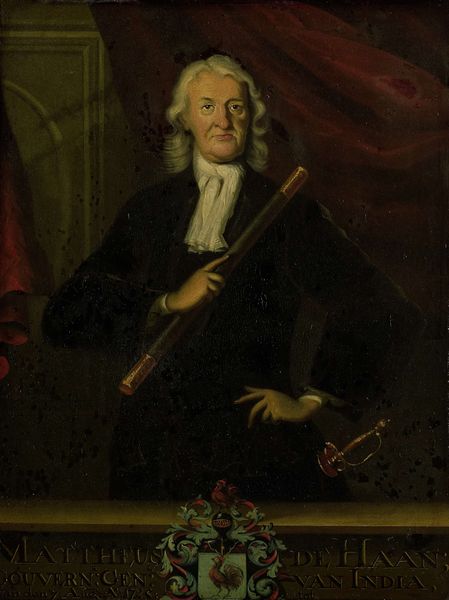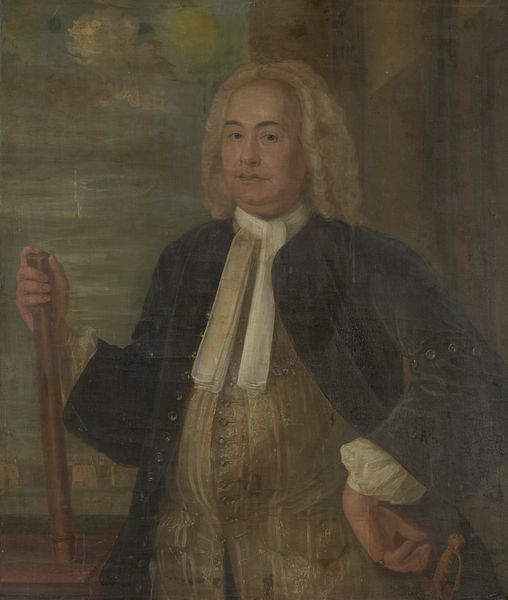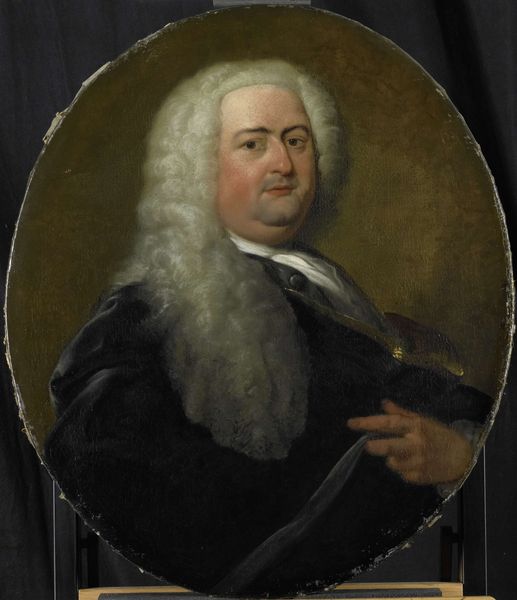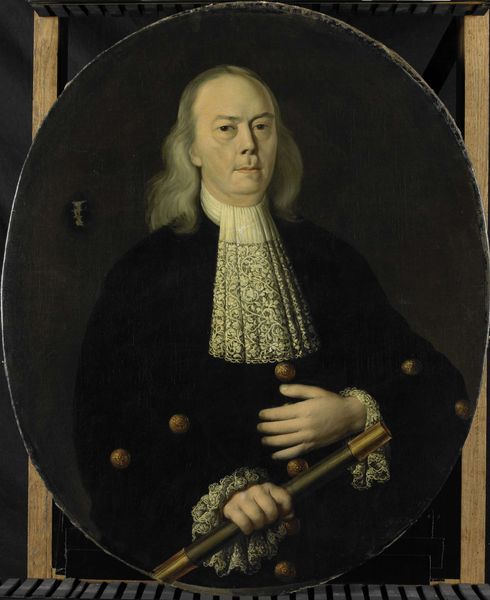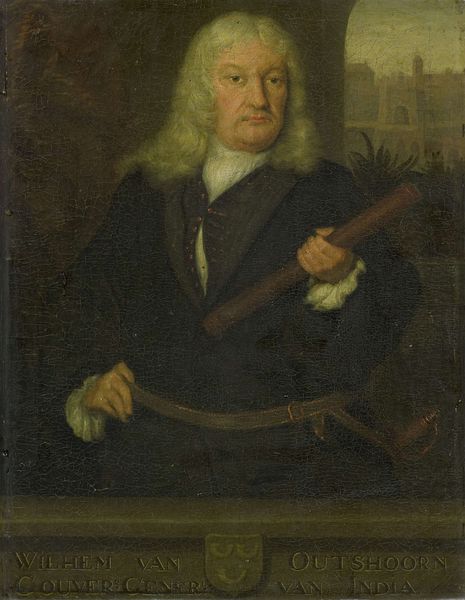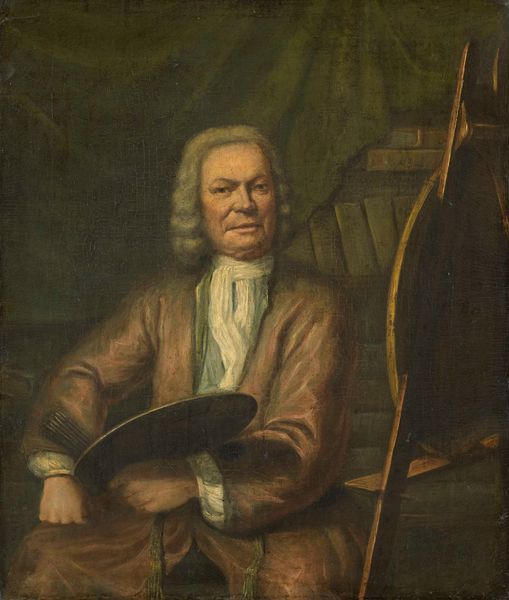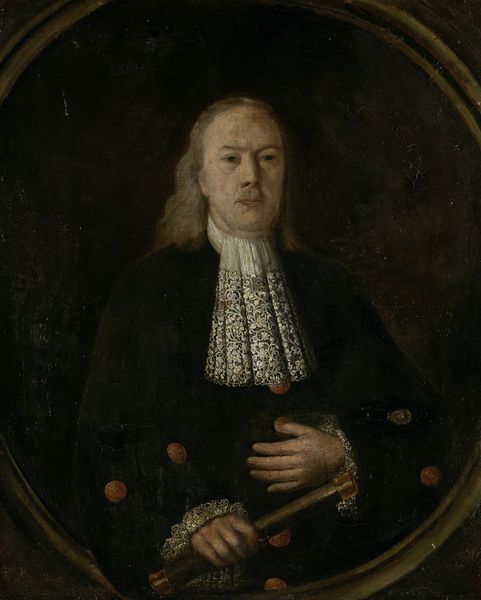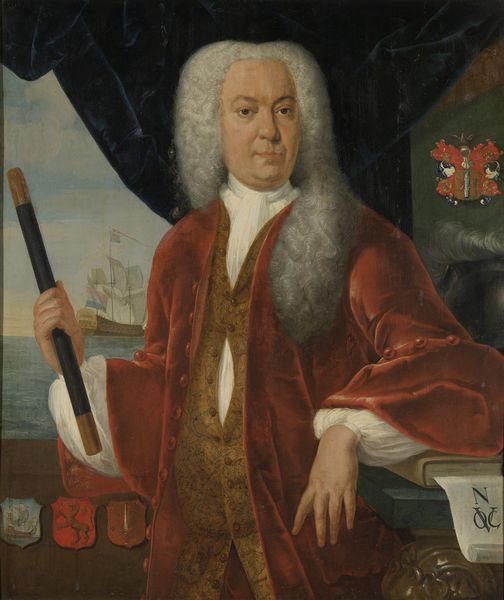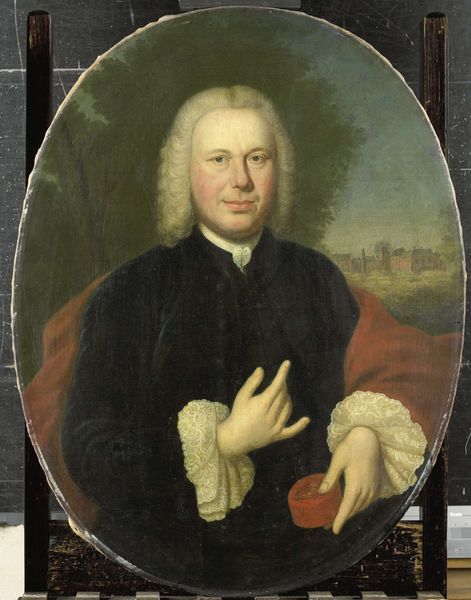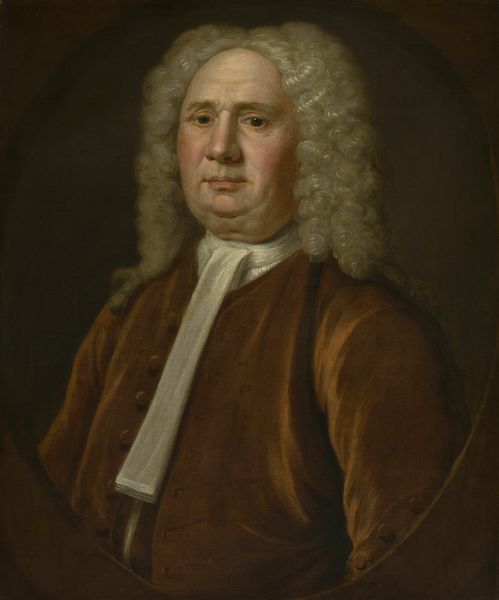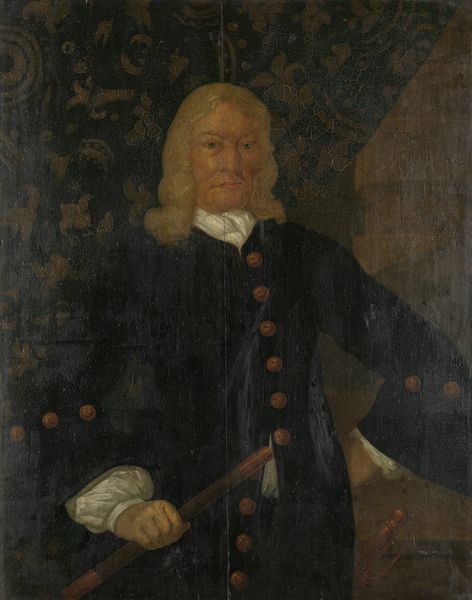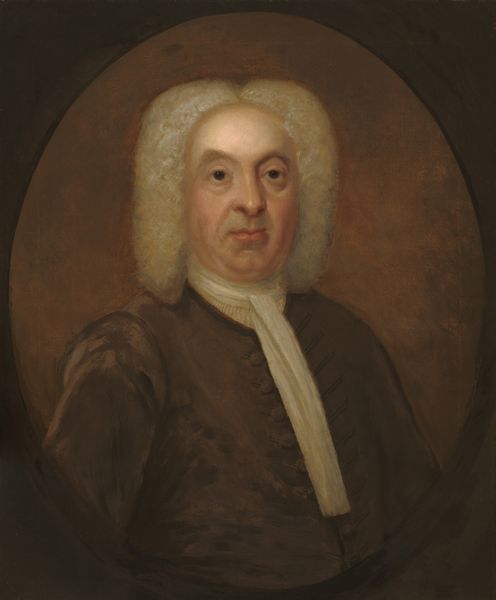
#
character portrait
#
possibly oil pastel
#
portrait reference
#
portrait head and shoulder
#
underpainting
#
portrait drawing
#
facial portrait
#
portrait art
#
fine art portrait
#
digital portrait
Dimensions: height 101.5 cm, width 83.5 cm
Copyright: Rijks Museum: Open Domain
This painting, titled "Mattheus de Haan," was created anonymously between 1725 and 1729. Oil on canvas, it presents a somber, formal portrait dominated by dark tones, punctuated by the stark white of the sitter's cravat and hair. Notice how the artist uses the cylindrical form of the object held by Mattheus de Haan to bisect the composition, drawing our eye from the subject's face to his gesturing hand. The artist juxtaposes textures, contrasting the smoothness of the face with the rougher rendering of the coat and background. This play with texture adds depth, emphasizing the materiality of the paint itself. The composition, while conventional for its time, hints at evolving notions of representation. The gaze is direct, yet there's a distance, a separation that suggests the complexities beneath the surface. The painting functions as a sign, encoding the sitter’s status and the values of his era, yet it also destabilizes fixed meanings through subtle formal disruptions. It remains a fascinating artifact for ongoing interpretation.
Comments
rijksmuseum about 2 years ago
⋮
The highest-ranking Dutch East India Company (VOC) official in Asia was the governor-general. He presided in the Castle of Batavia (now Jakarta, Indonesia), a fort built by the Dutch. The assembly hall in the Castle of Batavia was the centre of Dutch power in Asia. The walls were hung with portraits of all of the governors-general. Most of the 18th-century examples shown here were painted in Asia, often by anony¬mous artists.
Join the conversation
Join millions of artists and users on Artera today and experience the ultimate creative platform.
